Using a forward modeling technique, we fit the stellar populations of a sample of 31 massive quiescent galaxies in the CLEAR survey, in a redshift range of 1 < z < 1.8. Our measurements indicate that massive quiescent galaxies in this redshift range have ~ solar stellar metallicities. Thus, there is no evolution in the stellar metallicity - mass relation, up to a redshift of z ~ 1.8. We also show that many of these galaxies had formed ~70% of their stellar mass by z ~ 2-3.

Publications
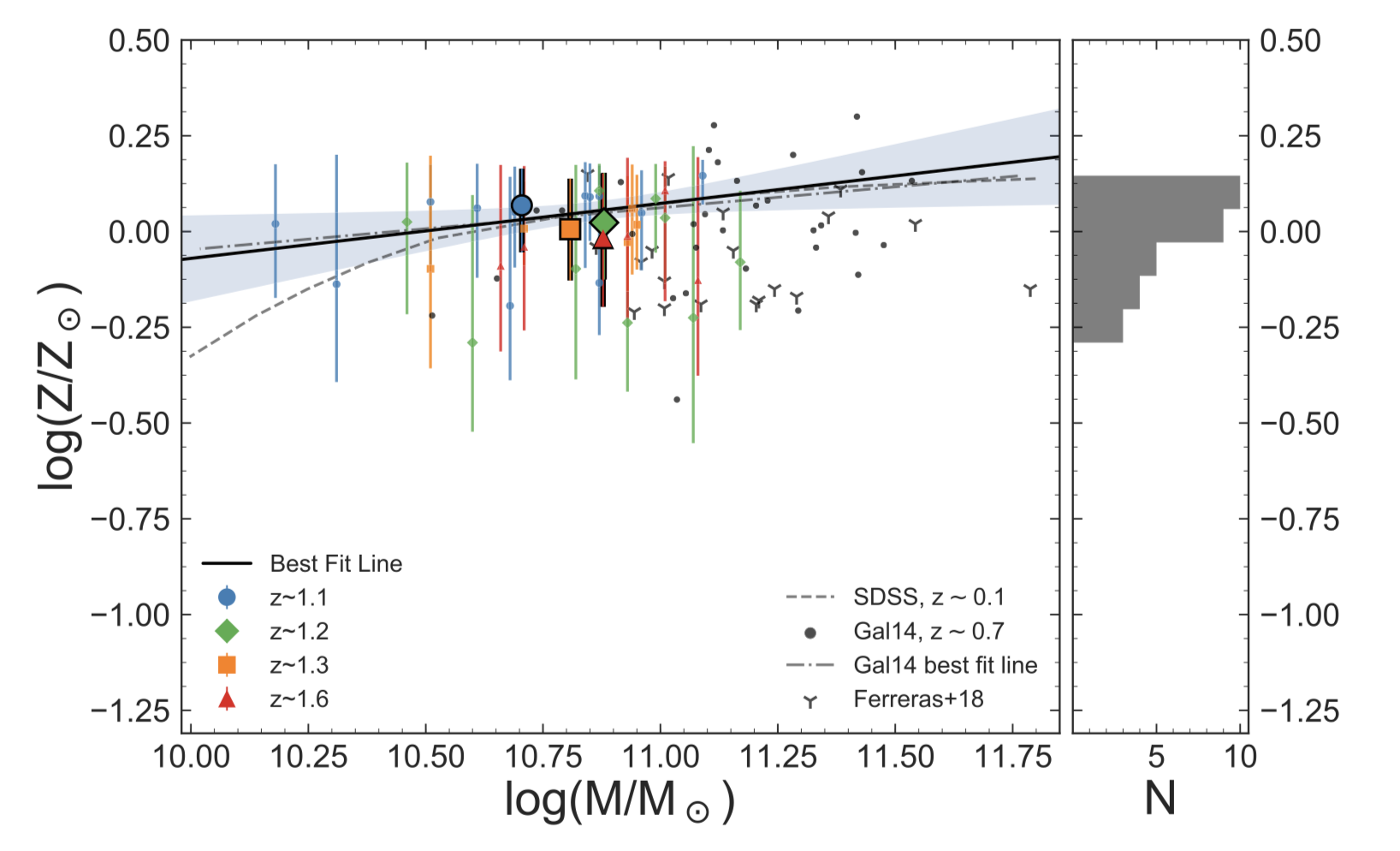
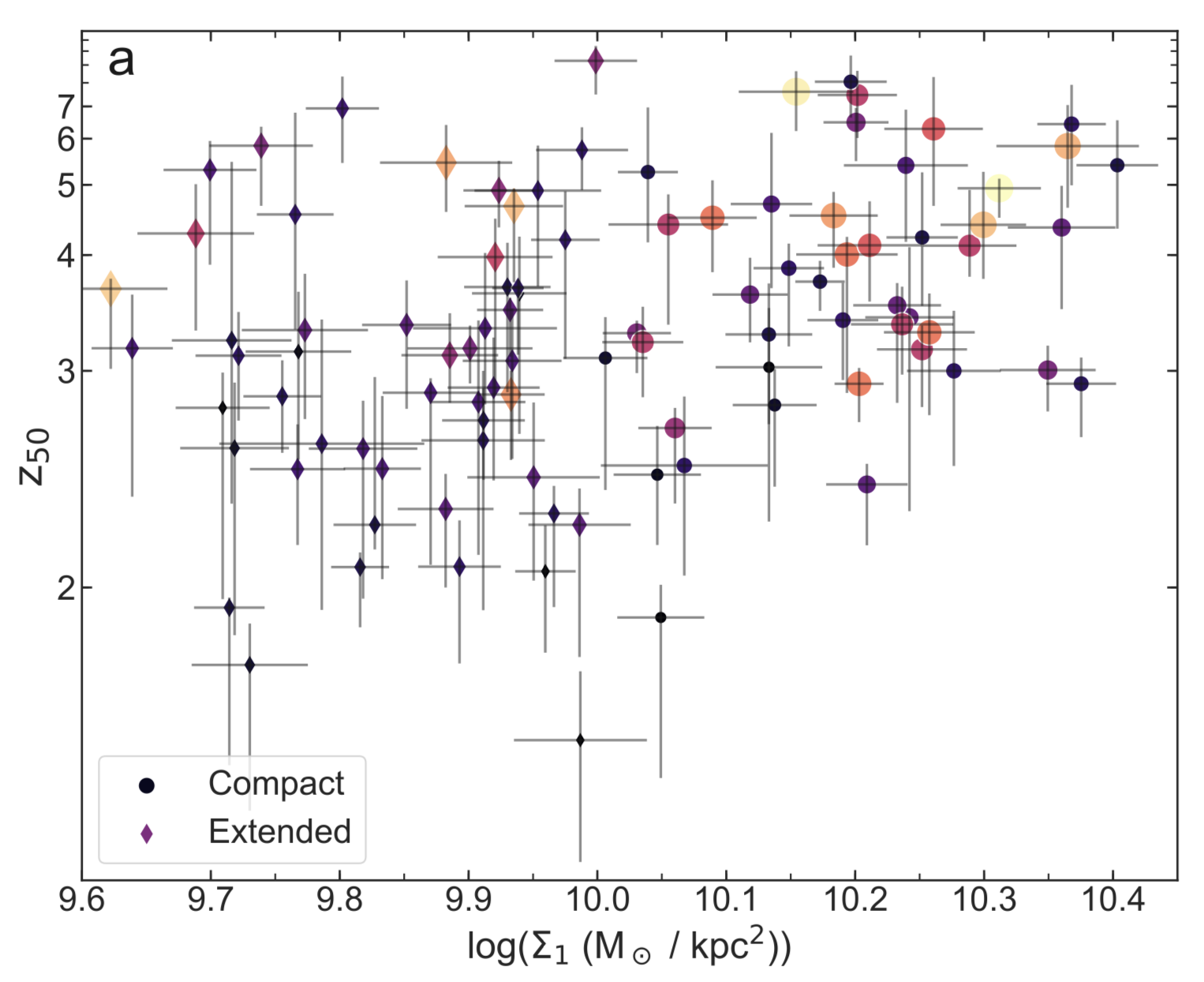
Combining photometric, G102 grism, and G141 grism data, we constrain the stellar populations and derive "non-parametric" star-formation histories for a sample of 97 massive quiescent galaxies in the CLEAR survey, in a redshift range of 0.8 < z < 2.5. By comparing formation redshifts (where the galaxy formed half its mass) to stellar surface mass densities within 1 kiloparsec we see that the most compact galaxies are biased to form early (z>2.5), while less compact galaxies show a wide range of formation redshifts. Our results favor a scenario where compact galaxies formed rapidly at high redshift, then go through subsequent evolution through minor mergers.

We use HST G141 grism Paβ (1282 nm) observations to study star formation rates and dust attenuation properties of 32 galaxies of z < 0.287 in the CLEAR survey. We compare Paβ SFRs to more commonly used star formation indicators, including UV continuum and Hα emission. Our measurements indicate that Paβ reveals star formation obscured by regions optically thick to Balmer and UV emission. We also observe burstier star formation histories at lower stellar mass, indicated by higher scatter in Paβ/UV measurements at lower stellar mass (left). Our measurements also suggest that Paβ/Hα ratios are more reliable attenuation indicators than the Balmer decrement. Paβ is minimally attenuated in highly dusty galaxies, while both Hα and Hβ are significantly attenuated.
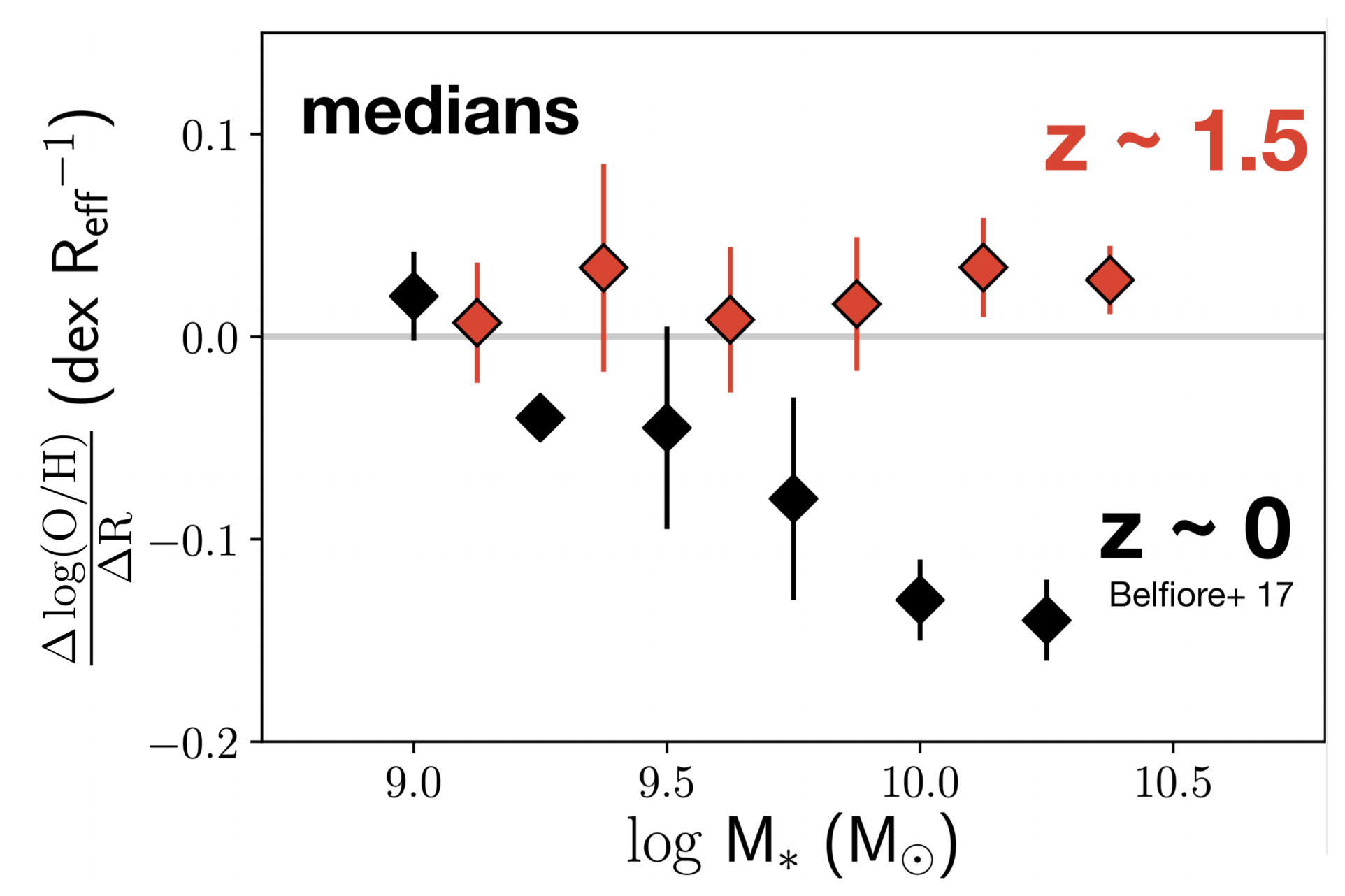
Using emission line maps generated from the CLEAR grism observations, we fit the resolved gas-phase metallicities of several hundred normal star-forming galaxies at 0.6 < z < 2.5. Surprisingly, we find that the majority of galaxies over this redshift range have flat radial metallicity gradients---they are as metal-rich in their outer parts as they are in their inner parts. This result rests in stark contrast with today's galaxies, which generally have declining metallicity gradients. It also runs counter to simple expectations from star-formation and stellar evolution models that assume little to no radial migration of gas; such models predict that galaxies should rapidly (<100 Myr) develop declining metallicity gradients. That the majority of these galaxies generally show flat gradients strongly favors a scenario in which gas-phase metals are (re-)distributed around high-redshift galaxies (and/or their central metallicities are diluted through pristine intergalactic accretion) on continuous short timescales.
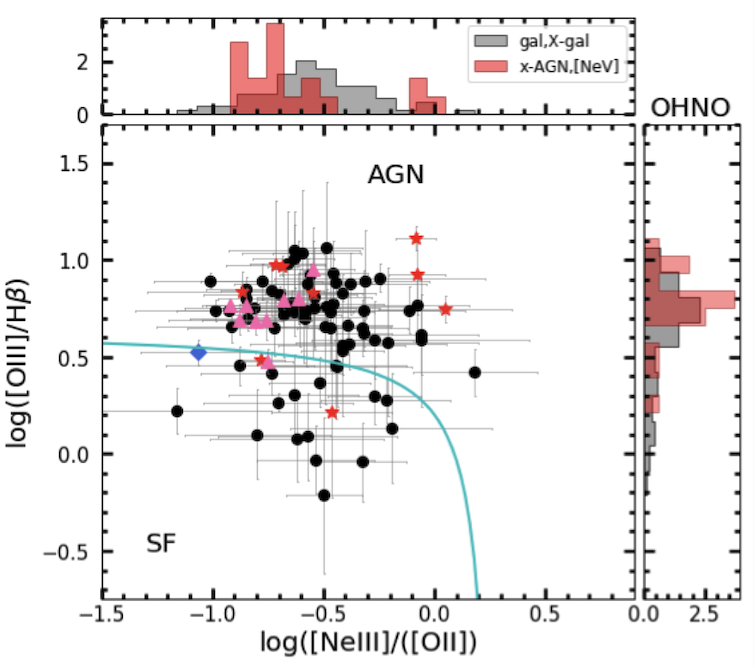
Using HST G102 and G141 grism spectroscopy we study teh emission line ratios of 533 galaxies at z~1.5 in the CLEAR survey. Whilte the "unV087" (tiop left) diagram does not effectively separate active galactic nuclei (AGN) and high ionizaiton sources from star-forming galaxies, the OHNO (bottom left) diagram does effectively separate the two populations. We compare our observations to photoionizaiton models and we find that low-mass and high-SFR galaxies tend to have lower metallicity and higher ionization.
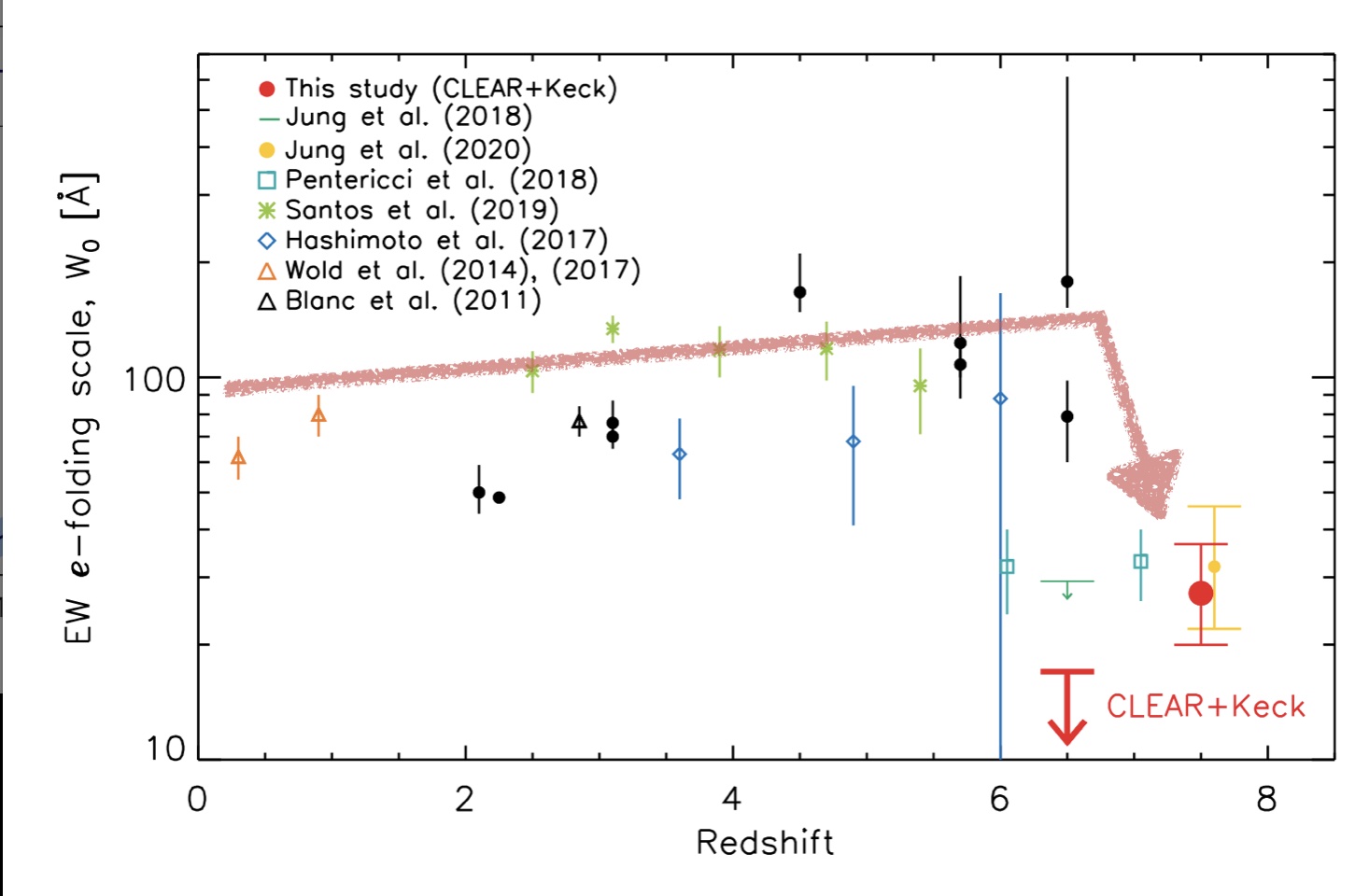
We investigate the evolution of Lyman-alpha (Ly-α) emission in galaxies using IR slitless spectroscopy from the Hubble Space Telescope (HST) Wide-Field Camera 3 (WFC3) G102 grism observations of 148 galaxies selected via photometric redshifts at 6.0 < z < 8.2. These galaxies have spectra extracted from the CANDELS Lyα Emission at Reionization (CLEAR) survey. We combine the CLEAR data for 275 galaxies with the Keck/DEIMOS+MOSFIRE dataset from the Texas Spectroscopic Search for Ly$\alpha$ Emission at the End of Reionization Survey. We then constrain the Ly$\alpha$ equivalent-width (EW) distribution at 6.0 < z < 8.2, which is described by an exponential form, dN/d(EW) ˜ exp( -(EW) / W0 ), with the characteristic e-folding scale width (W0). We confirm a significant drop of the Lyα strength (or W0) at z > 6. Furthermore, we compare the redshift evolution of W0 between galaxies at different UV luminosities. The UV-bright ( M(UV) <-21, or LUV > L* ) galaxies show weaker evolution with a decrease of 0.4 +/- 0.2 dex in W0 at z>6 while UV-faint ( M(UV) > -21, or LUV < L* ) galaxies exhibit a significant drop by a factor of 0.7-0.8 (+/- 0.2) dex in W0 from z < 6 to z > 6. Our results add to the accumulating evidence that UV-bright galaxies exhibit boosted Ly-α transmission in the IGM, suggesting that reionization completes sooner in regions proximate to galaxies of higher UV luminosity.
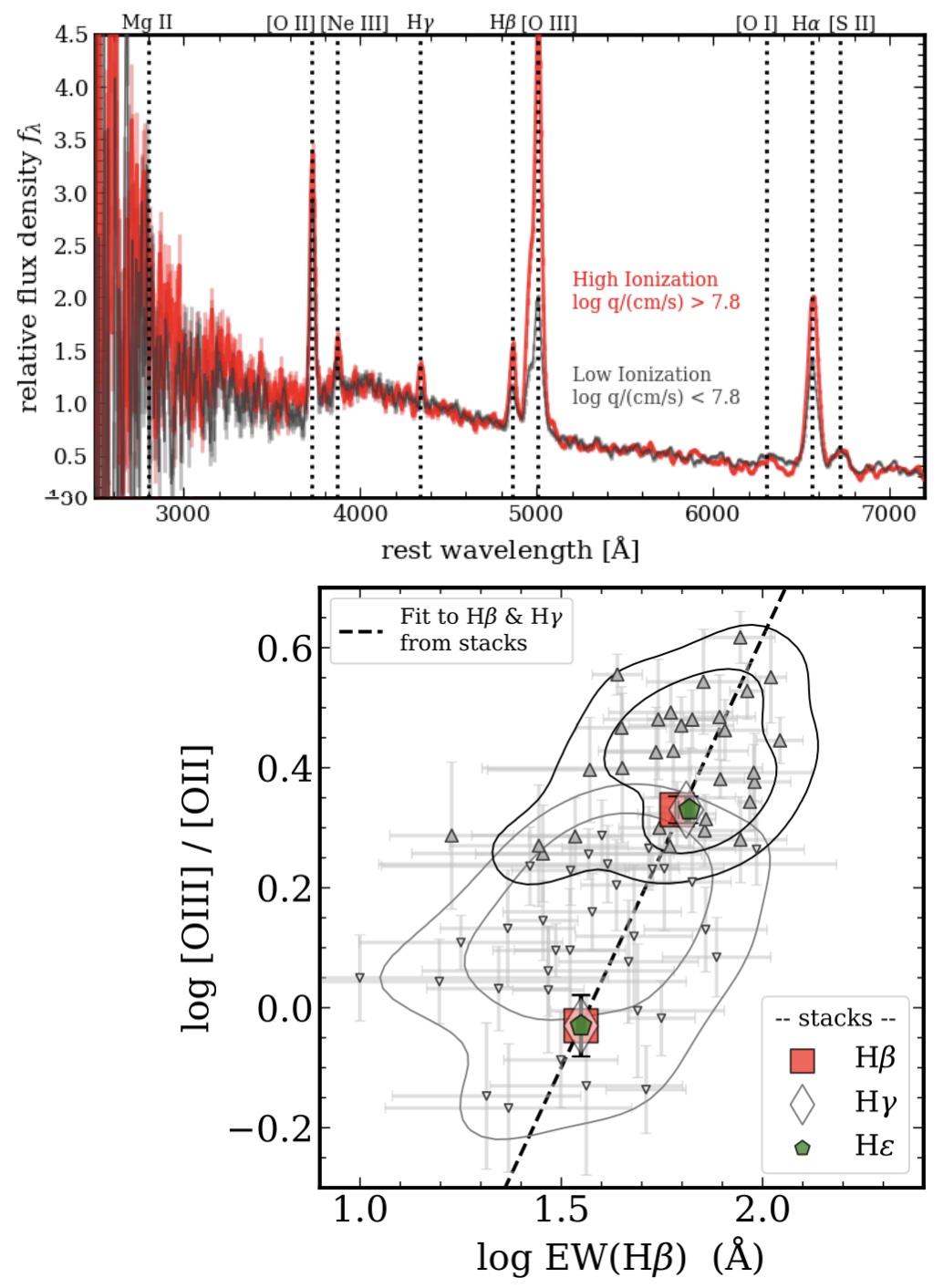
We use deep spectroscopy and photometry from CLEAR to study the stellar populations, gas ionization and chemical abundances in star-forming galaxies at redshifts 1.1 to 2.3. At these redshifts the grism spectroscopy measure the [OII] 3727, 3729, [OIII] 4959, 5008, Hβstrong emission features, which constrain the ionization parameter and oxygen abundance of the nebular gas. We compare the line flux measurements to predictions from updated photoionization models (MAPPINGS, Kewley et al. 2019). Compared to low-redshift samples from SDSS fixed stellar mass, log M / M_sun = 9.4-9.8, the CLEAR galaxies at z=1.35 (z=1.90) have lower gas-phase metallicity, Δ(log Z) = 0.25 (0.35) dex, and higher ionization parameters, Δ(log q) = 0.25 (0.35) dex, where U = q/c. We provide updated analytic calibrations between the [OIII], [OII], and Hβ emission line ratios, metallicity, and ionization parameter. We also find that at fixed stellar mass, the gas ionization parameter is correlated with the galaxy specific star-formation rates (sSFRs), where Δ log q = 0.4 Δ(log sSFR), shown in the figure here as a change in the strength of galaxy Hβ equivalent width vs. log q and [O III]/[O II]. We interpret this as a consequence of higher gas densities, lower gas covering fractions, combined with higher escape fraction of H-ionizing photons. We discuss both tests to confirm these assertions and implications this has for future observations of galaxies at higher redshifts.